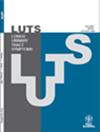Metabolically healthy obesity is associated with increased risk of lower urinary tract symptoms secondary to benign prostatic hyperplasia: A cohort study of Chinese elderly males
Abstract
Objectives
Obesity and metabolic status are both modifiable risk factors of lower urinary tract symptoms secondary to benign prostatic hyperplasia (LUTS/BPH). However, the association between metabolically healthy obesity (MHO) and LUTS/BPH is largely unexplored. This study aimed to investigate the risk of LUTS/BPH among different metabolic syndrome-body mass index (MetS-BMI) phenotypes in a cohort of Chinese males.
Methods
A total of 3321 males from the China Health and Retirement Longitudinal Study (CHARLS) without history of LUTS/BPH at baseline were included into the analyses. Participants were categorized into six mutually exclusive groups according to presence or absence of MetS combined with BMI status: metabolically healthy normal weight/overweight/obesity (MHN/MHOW/MHO) and metabolically unhealthy normal weight/overweight/obesity (MUN/MUOW/MUO). Adjusted odds ratios (OR) and 95% CI of LUTS/BPH across MetS-BMI categories were estimated with multivariable logistic regression models.
Results
A total of 394 (11.86%) participants developed LUTS/BPH during the follow-up. After adjusting for age, educational level, smoking status, drinking status, and BMI change, the multivariable-adjusted OR (95% CI) for incident LUTS/BPH comparing MUO, MHO, MUOW, MHOW, and MUN with MHN were 1.99 (1.23-3.22), 2.04 (1.14-3.66), 1.61 (1.11-2.34), 1.45 (1.02-2.05), and 0.91 (0.54-1.56), respectively.
Conclusions
MHO and MHOW were risk populations of LUTS/BPH, suggesting that overweight and obesity can independently contribute to LUTS/BPH, even among metabolically healthy individuals. These findings emphasize metabolically healthy individuals may still benefit from maintaining normal body weight to prevent LUTS/BPH. Our findings also support that those recommendations for LUTS/BPH should highlight the importance of maintaining metabolic health across all BMI groups among Chinese males.

 求助内容:
求助内容: 应助结果提醒方式:
应助结果提醒方式:


